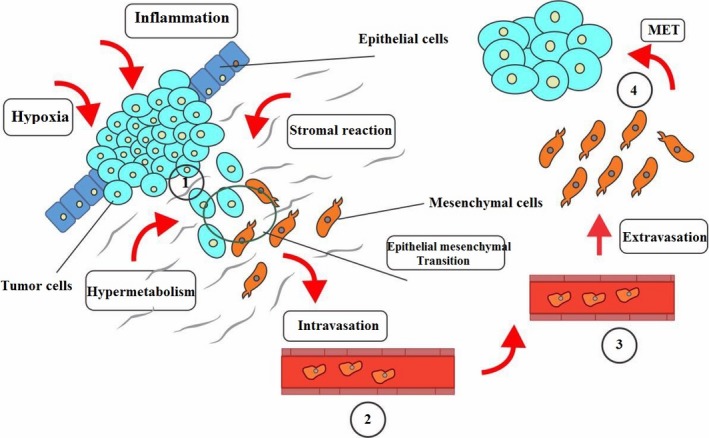Figure 1.

EMT in microenvironment and metastasis. (1) In carcinoma, there exist a primary epithelial phenotype containing a small group of mesenchymal‐like cancer stem cells. If not stimulated, they will undergo EMT, through genetic, autocrine and paracrine factors. These cells more easily escape from tumour mass by two ways, seeding nearby vasculature or stroma taking part by EMT to achieve mesenchymal features. Through migration, they can surpass the surgical region and consequently avoid surgical removal and radiotherapy and can form local recurrence in any place where re‐epithelialization take place during MET creating new malignancies. (2) The mesenchymal form is the best form to intravasate. (3) and a mixture of phenotypes is observed in blood stream. (4) The next step is extravasation. They may stay dormant; however, in any condition, they may be finally re‐epithelialized by MET and begin a macro‐metastasis with bone destruction abilities
